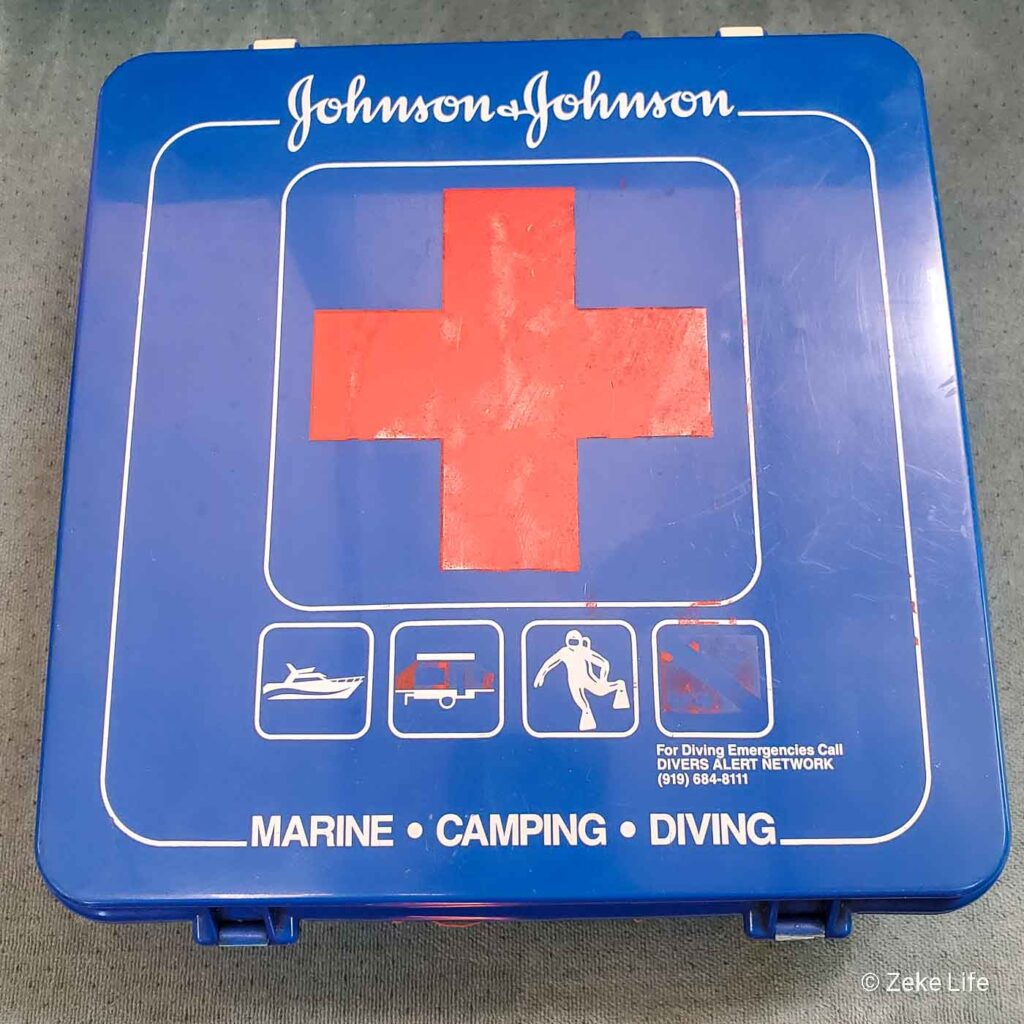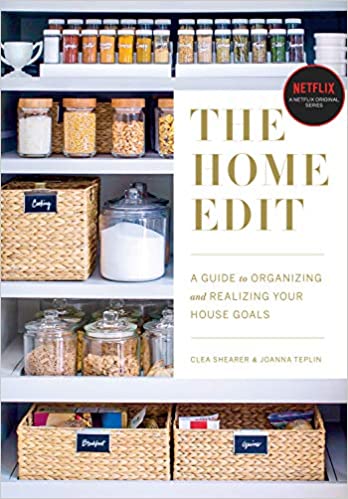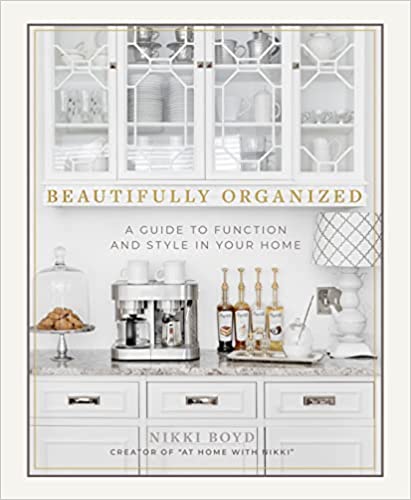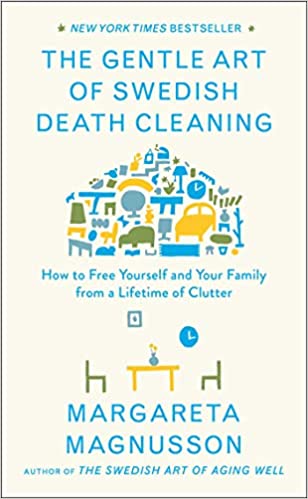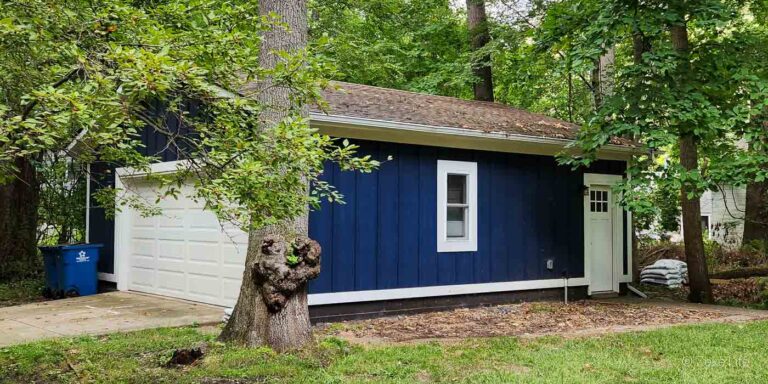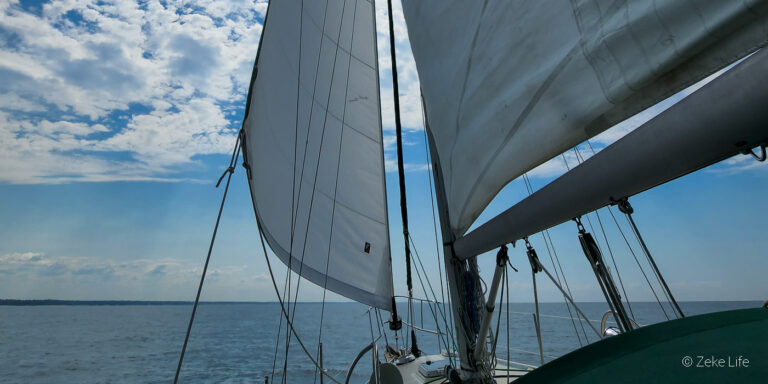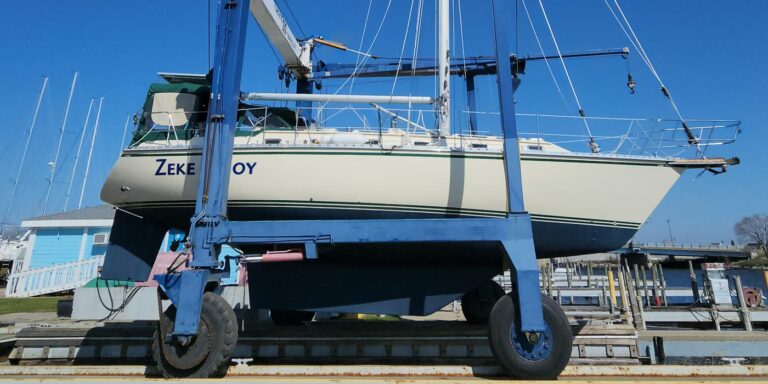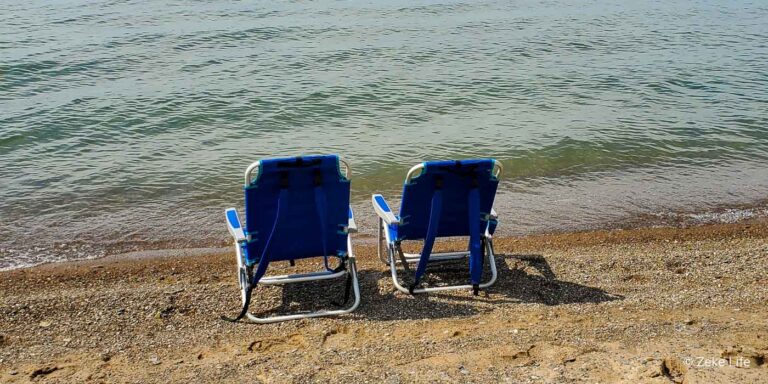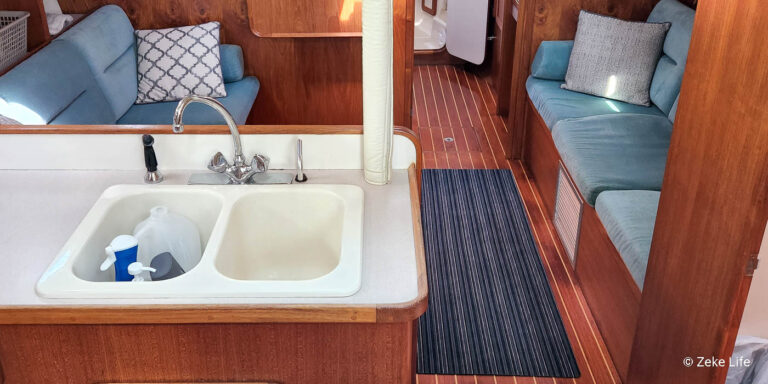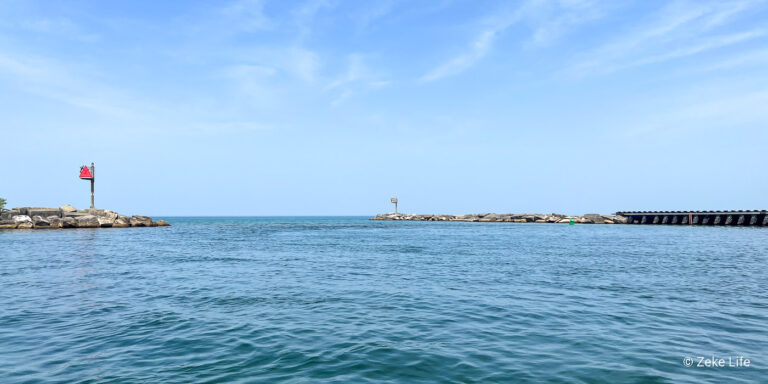This post may contain affiliate links*
In Case of Emergency
We’ve had First Aid Kits in both of our vehicles for years, and except for the occasional band-aid, we’ve rarely needed to use them. But that’s the point: we want to be prepared in case of an emergency. If I remove it to use somewhere else, I’d probably need it!
I’m hoping that this is the same situation for our boat too. We’ll have these items on the boat – tourniquet, rescue blanket, etc., and then never need to use them. Although, the chances of that happening is unlikely. Kyle was taking down and putting away the sails and stepped into the ‘companion way’ and fell. Luckily, he caught himself before falling all the way down to the bottom of the boat, and he only ended up with a bruised shin instead of a broken leg or worse!
Accidents will happen
While we try to be conscious of what we are doing, where we are stepping and holding on to when the boat is rocking, accidents will happen on a boat. The US Coast Guard released their annual statistics on reported recreational boating accidents in mid-June for 2021. Even though there was a downward trend for accidents, deaths and injuries compared to 2020, boating can be dangerous especially if you are not prepared or aware.
Prevention Methods
Obviously, the best option is to prevent accidents and injuries from occurring in the first place. “Alcohol use is the leading known contributing factor in fatal boating accidents”, so while I love a beer as much as the next guy, we made a rule that there is no alcohol on the boat when we’re away from the dock.
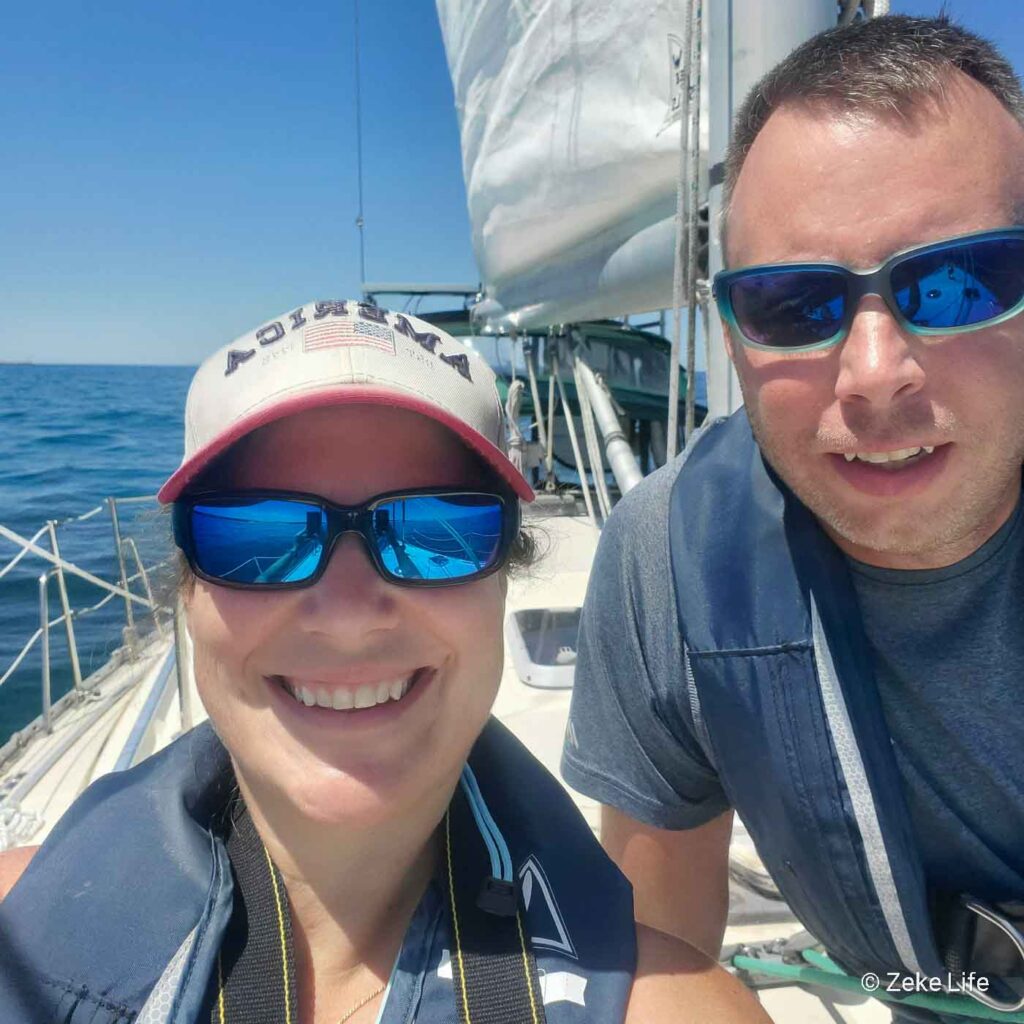
“81% of fatal boating accident victims drowned” and “83% were not wearing a life jacket”, which means that we have another SOP (standard operating procedure) to always wear a life jacket when the boat is away from the dock. Reading the report is sobering and somewhat depressing, and it really doesn’t cover the majority of injuries that may occur on the water.
Source for quotes above: https://uscgboating.org/library/accident-statistics/Recreational-Boating-Statistics-2021.pdf
Preparation is Key
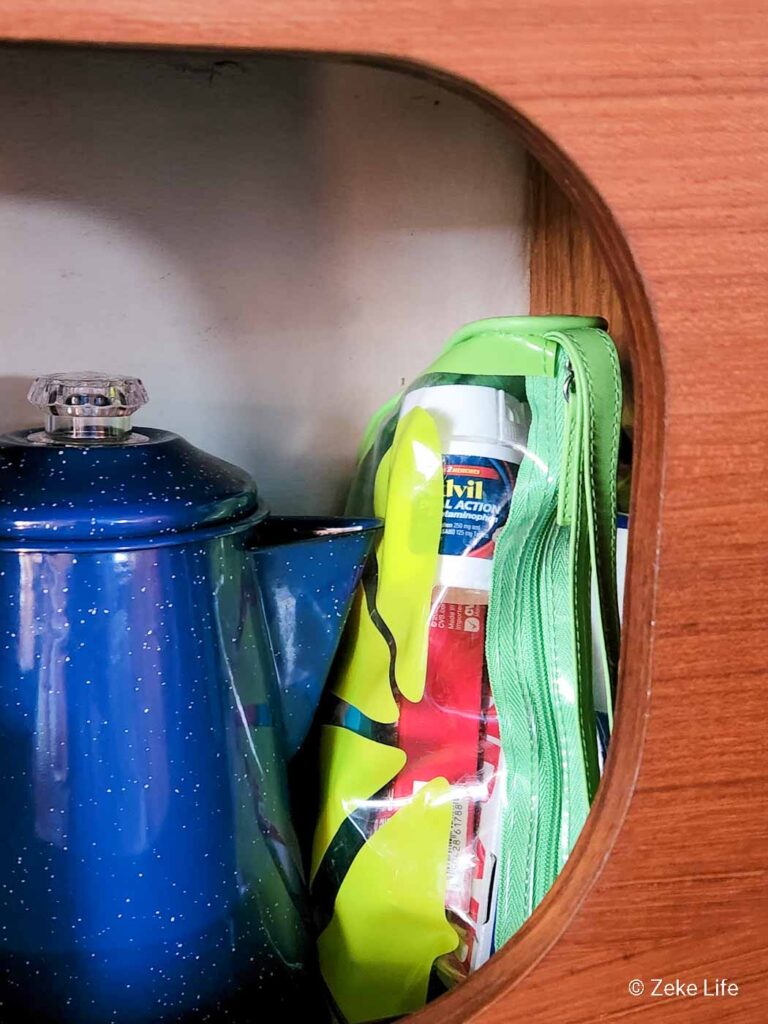
The next best option to avoid accidents altogether is to be prepared in case of injury. We have several first aid kits, and the level of severity determines the location for the kits. The port side saloon locker contains a bag of non-emergency basic medical supplies such as band-aids, Neosporin, Advil, Clear Eyes drops, Afrin, and a bite & sting relief kit. (And there’s a lot of bugs near the water and we’re constantly fighting battles against the biting flies on the water!)
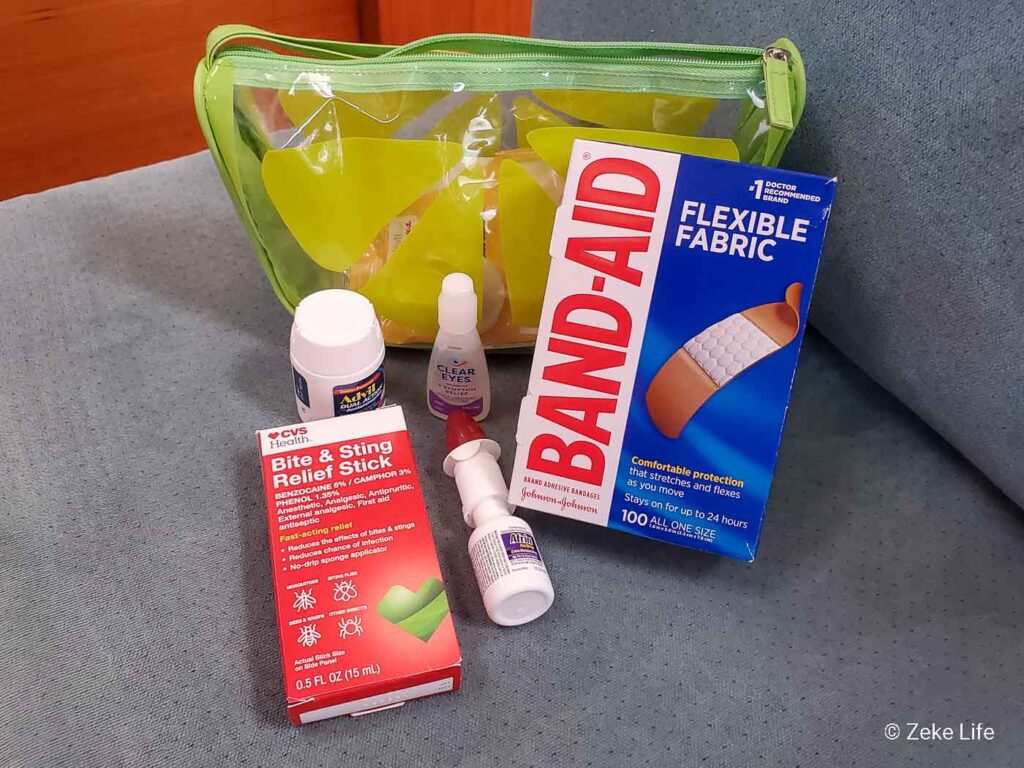
First Aid Kit on the Boat
The starboard side saloon locker contains our true emergency First Aid Kit, which includes:
- More band-aids as well as various specialty sizes – knuckle and fingertip, triangular bandage, butterfly closures, gauze bandages and tape
- Tweezer
- Finger Injury kit
- Instant cold pack
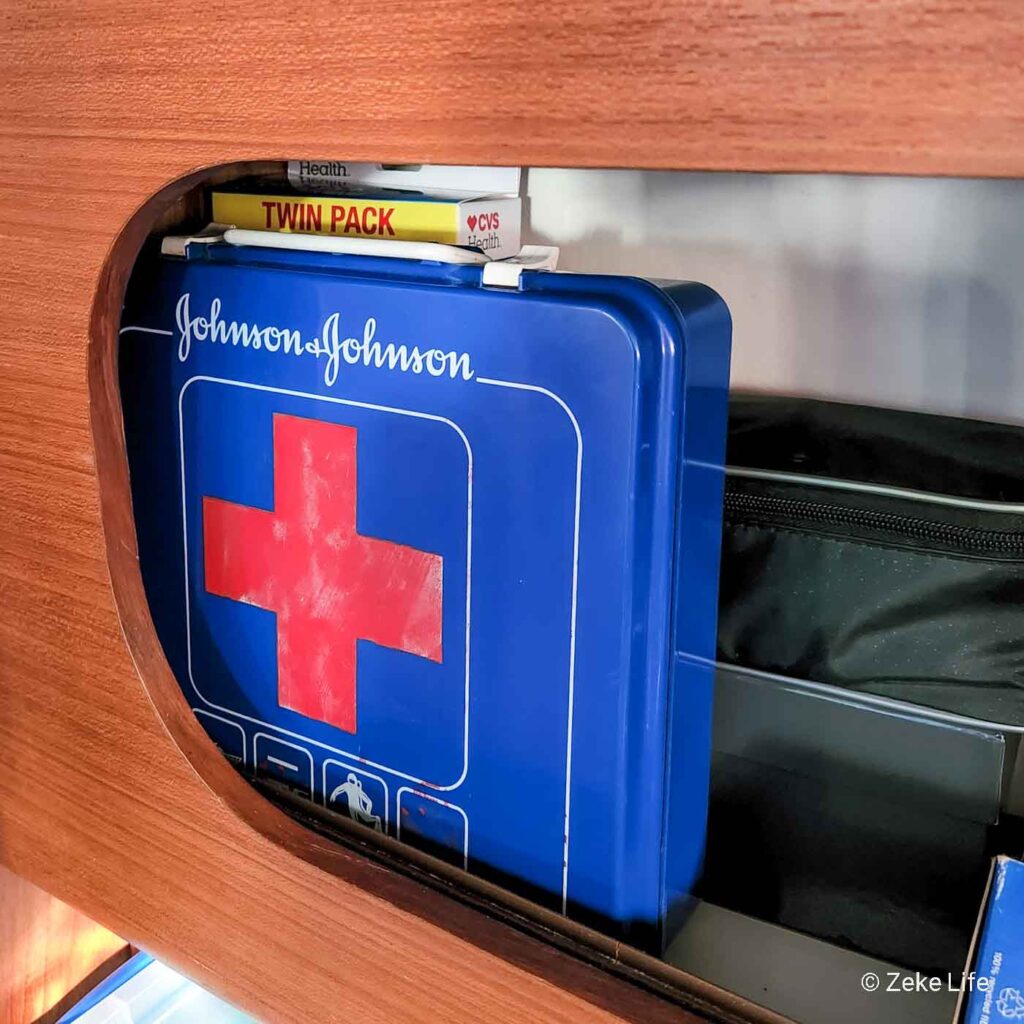
- Tourniquet
- Burn Cream
- Rescue Blanket
- Hydrogen Peroxide
- Rubbing Alcohol
- Disposable Gloves
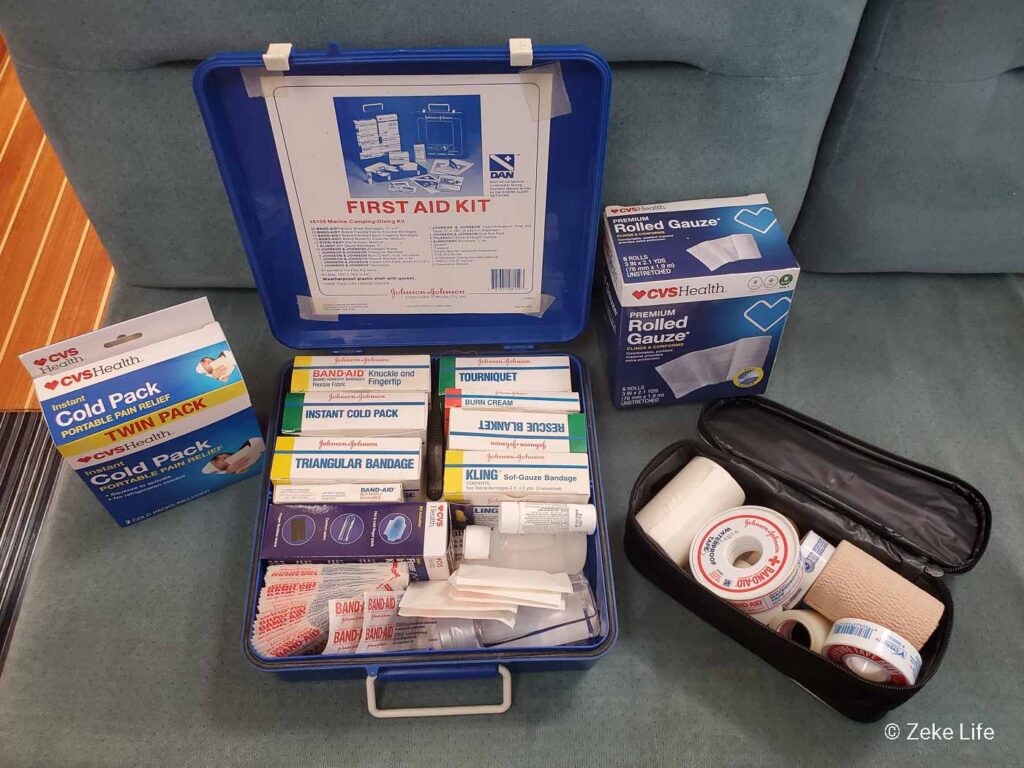
Kyle researched several different types of first aid kits, and while the MyMedic kit was extremely thorough, it was also very expensive. We decided to leverage the first aid kit that was on the boat, but replacing anything that was expired or empty.
First Aid Kit at home
When we moved to NWI, we downsized from a ~3500 square foot home with 2 floors and a full basement, 4 bedrooms and 3.5 bathrooms to a ~1200 square foot home with 1 floor and a basement, 2 bedrooms and 2 bathrooms. It’s a perfect ‘home base’ for us because I wasn’t ready to make the boat our only home.
But this means that everything must be organized and have a specific place.
How did I do this? Last winter, as I was reading books on sailing from our local library, I also rented books on home organization. My favorite 2 books were The Home Edit and Beautifully Organized. First of all, the pictures were beautiful and inspiring but they also had a really simple step-by-step process to follow when organizing a home. (I’ll share more about this in a future post … or you can read the book for yourself!)
I also read a book on Swedish Death Cleaning, which isn’t as morbid as it sounds. I actually found it quite comical because of how spunky the author is; she provided good laughs throughout the book along with her helpful advice to get rid of extra things prior to passing.
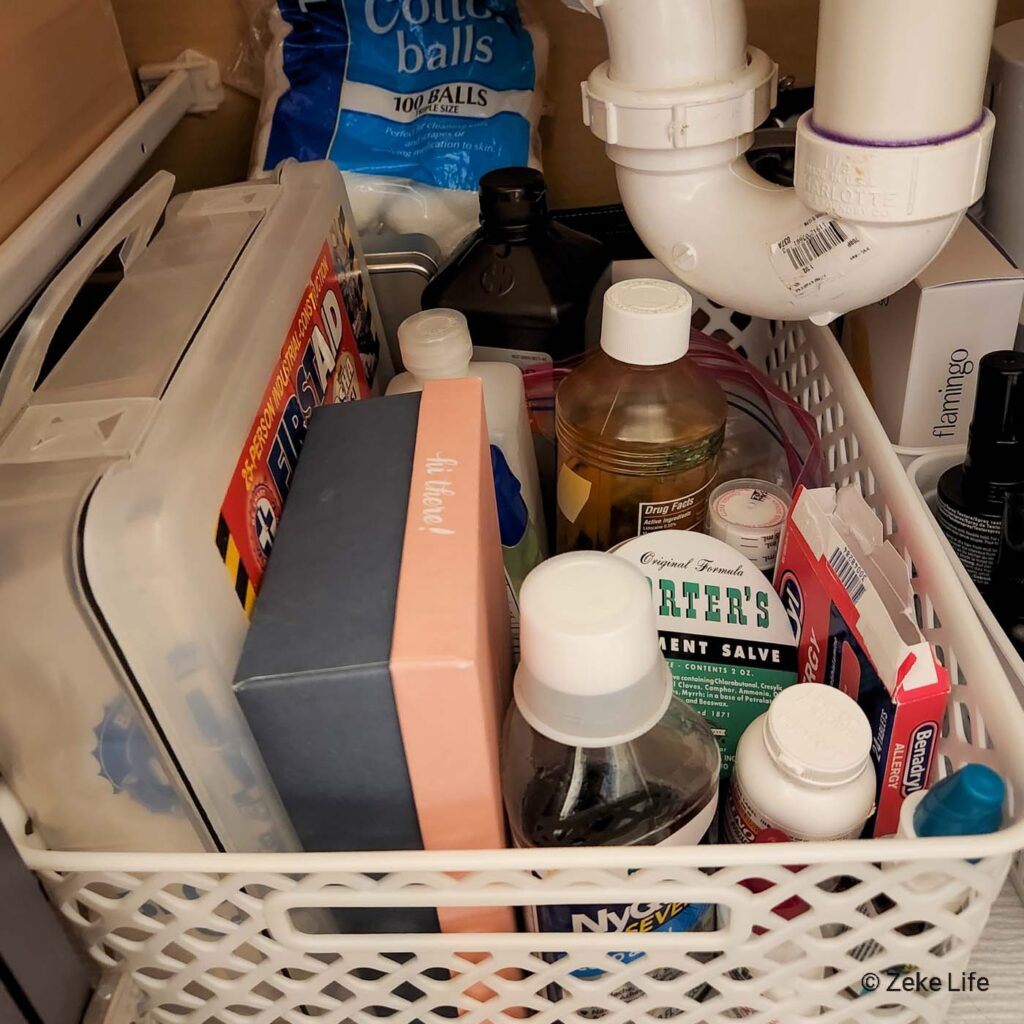
Location, Location, Location
Similar to the boat, we have various levels of first aid. Our basic non-emergency medical supplies and medicines are located under the bathroom sink. It contains a First Aid Kit, more band-aids, Neosporin, aspirin, Nyquil, Afrin, Clear Eyes drops, Benadryl*, hydrogen peroxide, rubbing alcohol and the miracle worker Porter’s Liniment Salve.
*We didn’t have Benadryl until last year when Kyle stumbled across a wasp nest after investigating a downed tree branch that had disturbed their home. He was stung at least 10 – 15 times and luckily we didn’t need to go to the emergency room, but we now have Benadryl on hand just in case this happens again.
There are additional medical supplies in a basket on the storage shelf in the basement mechanical room. This is used for overflow as well as items that are not used frequently such as gauze, tape and various braces that we’ve collected over the years for injuries. I’d recommend reviewing your medical supplies at least once a year to throw out expired medicine and replace and restock as needed.
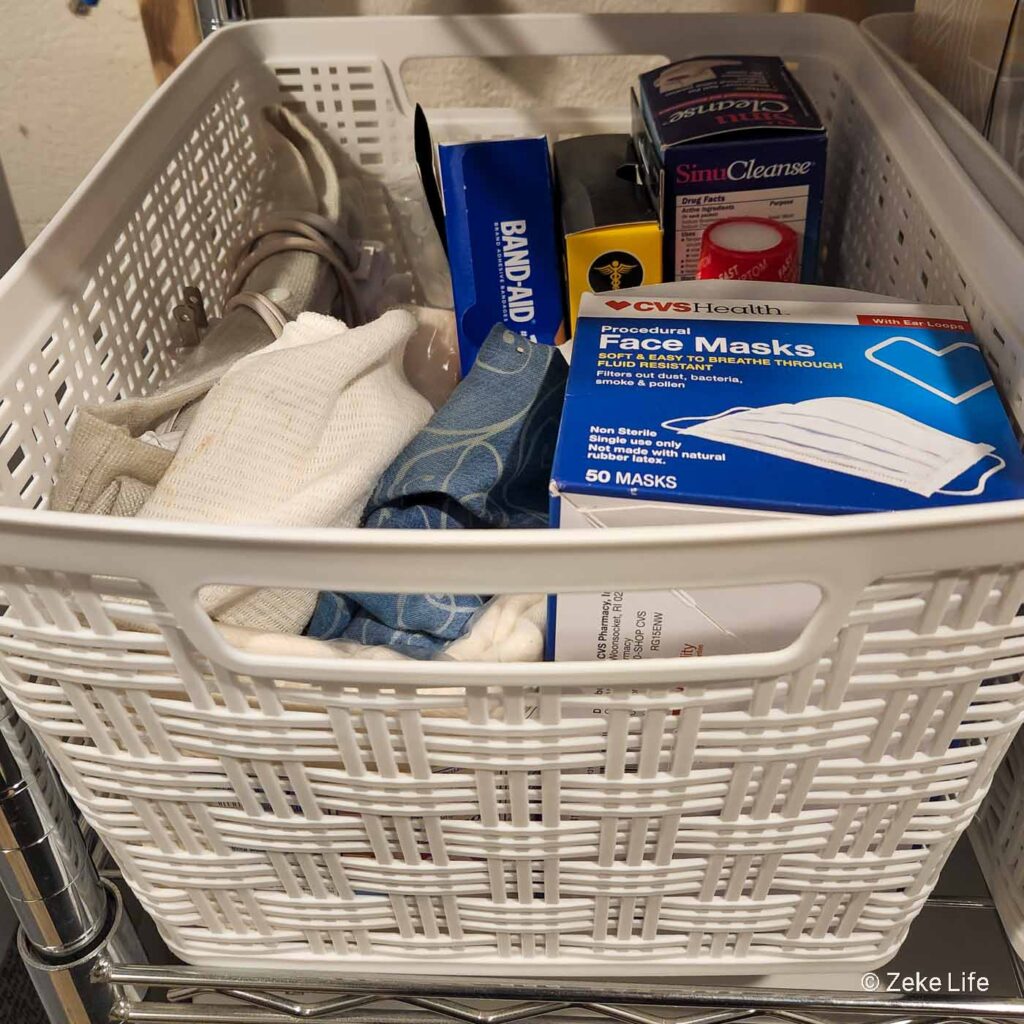
Be Prepared
First Aid is one of those items that I wish we didn’t need to have but we live in a world with sickness, disease, accidents and injuries. Things come up – especially this time of year when kids go back to school and are exposed to more germs. Now, you can be prepared too!
What do you Think?
How do you organize your first aid kit and medical supplies? Do you have a specific location or multiple locations too? I’d love to hear from you to help me get more prepared in case of an emergency. Please share your feedback in the comments below. We’d love to hear from you!
– Kara from Zeke Life
Live like Zeke
You’re such a good boy!


